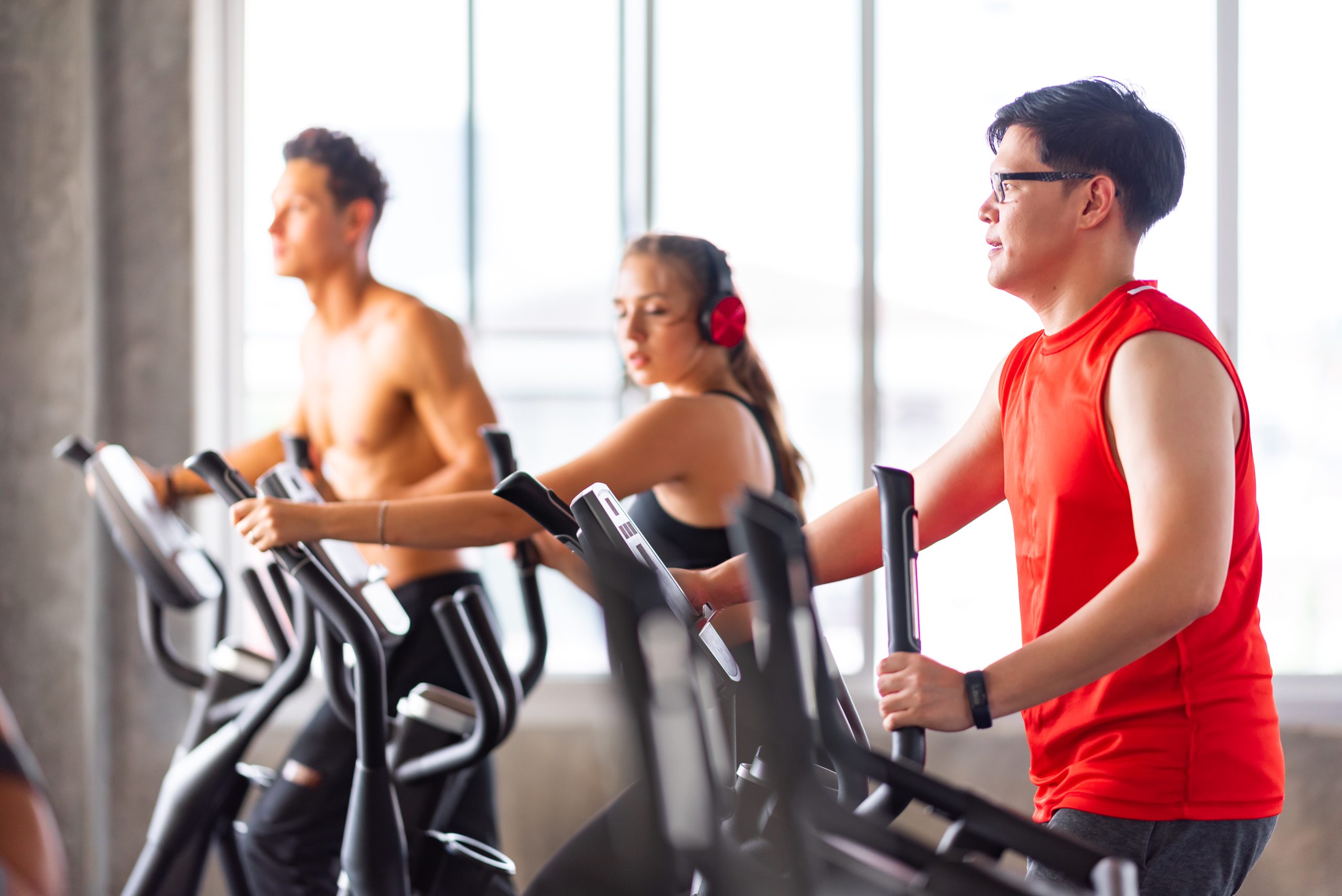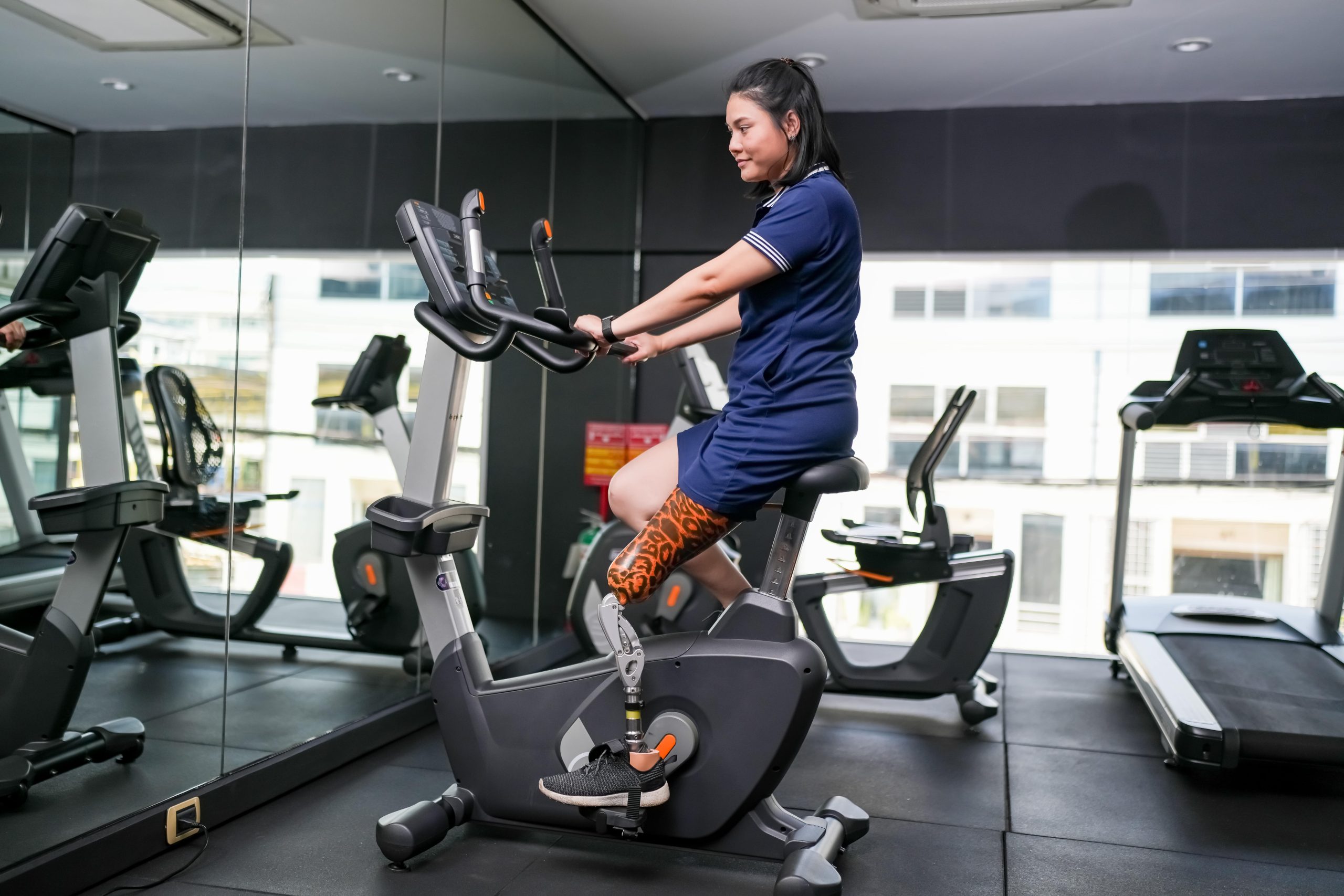Do you find it hard to make room to move in your jampacked schedule? You’re not alone – many people cite lack of time as a major barrier preventing them from being as active as they would like to be. But what if you could reap the many benefits of physical activity in a short amount of time? Say “hi” to high-intensity interval training (HIIT)!
What is HIIT?
“HIIT” refers to workouts that involve switching between “work” periods, which are short bursts of high-intensity (vigorous) exercise that greatly raise your heart rate, and “recovery” periods of low-intensity exercise. You can apply HIIT to almost any cardio activity, whether it’s running, cycling, swimming, cross-country skiing or stair-climbing. For example, a HIIT swim session could look like this: start with a brief warm-up to prepare your joints and heart (like always), swim as fast as you can for 30 seconds, then take it down a notch and swim slowly for one minute. Repeat this for a total of four to eight rounds, and bam – you’ve done a HIIT workout!

What are the benefits of HIIT?
1. It saves you time
Luckily you don’t need much time with HIIT because these types of workouts are typically 10 to 30 minutes long, yet they can have similar health benefits to doing double the amount of continuous moderate-intensity exercise. For instance, a half-hour HIIT workout can deliver similar health perks to a one-hour jog.
You can also burn energy (calories) quickly with HIIT. In a study comparing the amount of calories burned during half an hour each of HIIT, biking, running and weight training, researchers found that participants who did HIIT burned 25 to 30% more calories than the participants who did the other types of exercise. So, the HIIT group got more bang for their workout buck!

2. You can do it almost anywhere
No exercise gear access? No problem! Since you can apply HIIT to activities like running or bodyweight exercises that don’t require equipment, you can do HIIT sessions at home, the park or even work.
3. It can boost your maximal oxygen consumption (VO2 max)
Maximal oxygen consumption (VO2 max) is a measure of your body’s aerobic fitness and how much oxygen you can possibly consume to fuel your muscles. Having a high VO2 max for your age and sex is a good indicator of having a healthy heart, arteries and lungs. While endurance training (long, continuous sessions of cardio exercise like cycling or running at a steady pace) typically improves VO2 max, HIIT can result in the same benefits but in less time.

In one eight-week study, participants who did two hours a week of endurance training on a stationary bike and those who engaged in one hour per week of HIIT on a stationary bike both raised their VO2 max by roughly 25%. This suggests that HIIT can improve oxygen consumption as much as endurance training but in about half the time.
4. It can help control blood sugar levels and improve insulin resistance
If you’re looking to keep your blood sugar levels under control, then HIIT is a great option. Not only does research show that HIIT programs can help lower blood sugar levels in people without type 2 diabetes, but some studies of people with type 2 diabetes show that HIIT is also effective at improving their blood sugar levels. Plus, research shows that HIIT leads to improvements in insulin resistance (a condition where your body doesn’t properly respond to insulin) that are at least as good as continuous exercise.
5. It fires up your metabolism
According to several studies, following HIIT sessions, you experience “excess post-exercise oxygen consumption (EPOC)”, also known as the “afterburn effect”, where your metabolism is higher for a few hours after a HIIT workout. This means you’re burning more energy even as you binge-watch your favourite TV series or scroll on social media after fitting in some HIIT. Although you can also experience EPOC after a continuous jog or a resistance training session, for example, some studies show that it’s even higher following a HIIT workout.

6. It can reduce your blood pressure and heart rate
Many studies show that HIIT can reduce blood pressure and resting heart rate in people with high blood pressure. For example, a study on adults with high blood pressure found that the participants who did HIIT on a stationary bike over eight weeks lowered their blood pressure to the same degree as those who engaged in endurance training on a stationary bike over the same eight-week period. The endurance training group worked out four days a week for half an hour a day, while the HIIT group exercised three days a week for 20 minutes a day. Some research suggests that HIIT may even decrease blood pressure more than moderate-intensity exercise.
Before you read our HIIT tips, let’s put your HIIT knowledge to the test!
6 quick HIIT tips for beginners
Now that you know what HIIT’s all about and its benefits, here are some tips for getting started safely and effectively:
1. Ask your doctor if HIIT is right for you: HIIT can be demanding on your heart and joints, so check with your physician to find out if it’s suitable for you, especially if you have health issues.
2. Pick a cardio activity you enjoy: Whether it’s running, cycling, swimming or cross-country skiing, choose an activity you love and are used to doing at low intensity. The work periods can be tough, so picking an activity you like can help motivate you to push through to the next recovery phase!

3. Find a work-to-recovery ratio that works for you: The most common HIIT approach used in research is a two-to-one ratio of work to recovery time based on the Tabata method (20 seconds of work to 10 seconds of rest), but that was designed for Olympic speed-skaters! Starting with more recovery than work (for example, a one-to-three ratio of 20 seconds of work to 60 seconds of recovery) is a great way to build your stamina and ensure that you can give it your all during a work period. There are some free interval timer apps available for iPhone and Android that can help you keep track of your work and recovery periods during a HIIT workout.
4. Ease your way into it: Start with only a few cycles of HIIT two times a week to give your body enough time to recover between sessions and avoid injury.
5. Follow along with our HIIT Workout video: We teamed up with YMCA Canada to create a fun HIIT routine where you can use resistance or your own bodyweight. This workout is suitable for all ages and abilities.
6. Take a HIIT class: If you’d rather try an in-person HIIT session led by a qualified instructor, many recreation centres and gyms such as GoodLife Fitness, Orangetheory Fitness and privately owned ones offer HIIT classes you can sign up for.
From saving you time to revving up your metabolism, HIIT packs a healthy punch! So, if you have little time but want big results, give HIIT a shot – your body (and calendar) will appreciate it!









